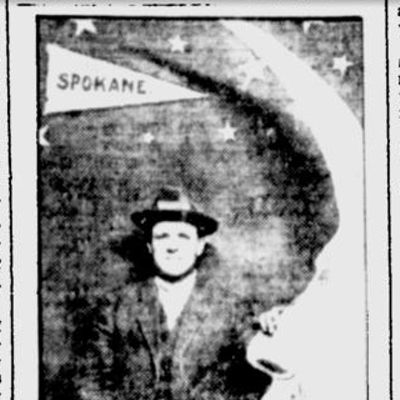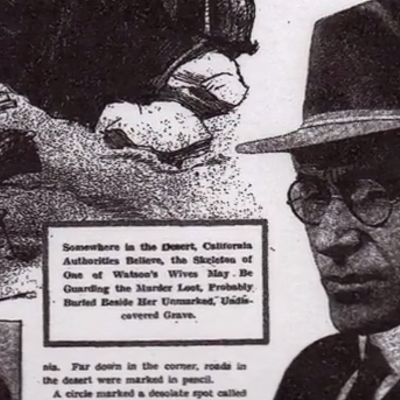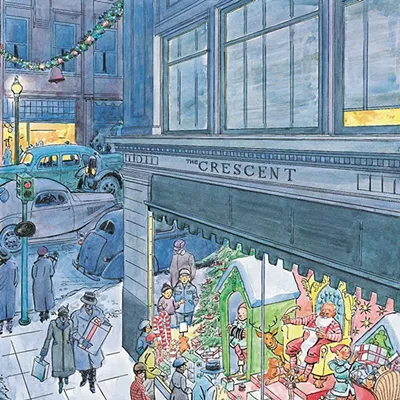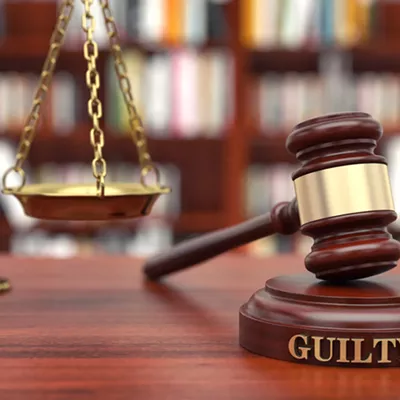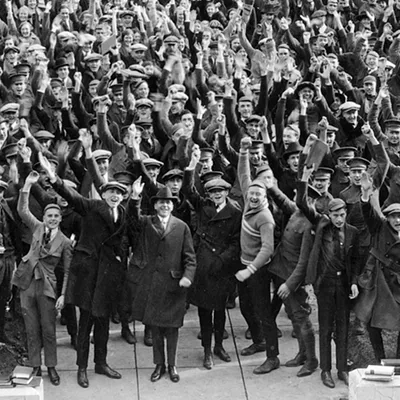"Hangman Creek" received its name from an incident that took place 150 years ago this month in a little meadow 25 miles south of Spokane. The name, which the state Legislature has been trying to abolish (to be replaced by Latah Creek) by proclamation for more than a century, persists for a good reason. Like many pioneer names ("Leadville," "Tombstone," "Crazy Woman Creek" "Dead Man's Gulch," "Death Valley"), it's an honest reminder of a gritty past.
The execution of Qualchan at that spot marks a key moment in the region's history. In retrospect, it was the moment when this region went from "Indian Territory" to "Western settlement." The importance of the events is reflected in the fact that so many familiar names connect to that time: Stevens Street, Steptoe Butte, Fort George Wright, Mullan Road and Qualchan Golf Course.
The events of 1858 also still retain some historical mysteries for the amateur historian. Why didn't Col. Edward Steptoe become the first Custer? The Indians had him surrounded. Another is why Qualchan, an implacable warrior dressed in his finest clothes on the morning of Sept. 24, 1858, calmly rode into Gen. George Wright's headquarters camp, where he was instantly seized and hanged from a tree limb drooping over the creek.
That's how the story ends. It begins three years earlier with the remarkable personality of Isaac I. Stevens.
Bringing Big Changes
First in his West Point class, Issac Stevens was also incredibly brave and ambitious. He resigned his Army commission to accept appointment as first governor of Washington Territory in 1853, a job of enormous challenges and one that would give him a chance to show what he could do.
One problem facing the Pacific Northwest frontier was that it needed a railroad. Stevens personally led expeditions into snowy mountain valleys to find a railway passage. The other great problem was what to do with the region's original residents. Stevens plunged into that problem with the same fearless abandon. He called a "Great Council" in the Walla Walla country, attended by more than 5,000 Indians, and insisted that the representatives of the tribes designate reservations they would accept and commit to doing so.
When Indians hesitated -- this was their entire way of life under discussion, after all -- Stevens cajoled and badgered. He pointed out that Yakima chief Kamiakin had not said a word. "Is he is not afraid to speak? Then speak out." An Indian present later recalled seeing Kamiakin biting his lip so hard that it bled. "The treaty will have to be drawn up tonight," Stevens told the assembled Indians. "This business must be dispatched."
Ultimately most put their marks on a piece of paper. But except for the Nez Perce, few felt they were signing away their lands. Indeed, most were persuaded at the conference that they must oppose the whites. The Yakima chief Owhi said later, "The war commenced from that moment."
Choosing Sides
Kamiakan took the lead in attempting to build an alliance among all of the region's tribes. He was rich in horses and gave them all away to Indians who would join him. His idea was simply to draw a line at certain passes and rivers that were entry points into the interior country and forbid whites to enter on penalty of death. It was a tactic bound to end in disaster, since it changed them from the legal landowners to criminals in the eyes of the new settlers. But the Indians could not think of any other answer to Stevens' demand that they go to reservations.
Eventually Kamiakan and Owhi could claim contingents of support in nearly all tribes in the region. The Spokanes and the Coeur d'Alenes had tried to avoid the whole issue by refusing to go to Stevens' gathering in Walla Walla. That did not deter Stevens. He rode without military escort through Indian lands boiling with rebellion and presented himself for talks. The conference, held at Plante's Ferry on the Spokane River, was "one of the most stormy sessions" he had ever had with Indians, Stevens would later write. The Spokanes in particular pointed out they had never signed papers and any large movement of troops across the Snake River would be considered an act of war.
The Spokanes and Coeur d'Alenes had no more inclination to take the word of Kamiakan than of Stevens. Then three things happened to convince them that Kamiakan was right. Most inconveniently, gold was discovered north of Colville, bringing streams of miners into Indian country. Then Capt. John Mullan was spotted beginning to plot his road right through the middle of Spokane and Coeur d'Alene country. Finally, on May 6, 1858, Col. Edward Steptoe led 158 soldiers across the Snake River and straight toward Spokane country, exactly what the Indians warned against.
The Great Escape
Col. Steptoe thought he was merely tending to some military errands. He wanted to arrest a notorious Palouse Indian. He wanted to hear what was up with the Spokanes. He had promised to consult with miners in Colville who were worried about the mood of the Indians. So he expected no trouble as he sauntered at the head of his small army through the swells of the Palouse.
When he reached a point just beyond the present town of Rosalia, he was nonplussed to look up at the hills and see there were somewhere between 600 and 1,000 Indians on horseback, armed with rifles, war regalia fluttering in the breeze.
After a brief talk with their leaders, Steptoe was persuaded to turn around. But as he tried to retreat, a riot-like dynamic took over. A few hotheads fired shots at the white soldiers, who had no choice but to fire back. Their return fire killed three popular members of the Coeur d'Alenes and some Indians commenced an attack.
Steptoe retreated to defensible high ground on the hill overlooking what is now the town of Rosalia. (Although Steptoe Butte was later named for the colonel, the battle did not take place there.) There he got the news that his soldiers each had only about three rounds of ammunition left. Surely they would be overrun in the first attack. So in consultation with his officers, Steptoe planned a midnight escape. Wrapping the horses' hooves in cloth and leaving behind all but essential animals and equipment, they followed Nez Perce scouts down the south ridge of the hill and, miraculously, escaped.
It seems incredible that such a large group could pass through hundreds of irate warriors. But it had happened before. Maj. Granville Haller and 84 soldiers were surrounded in Walla Walla country just three years earlier, but they also managed to slip away while the Indians slept. The next year, Lt. Phil Sheridan, the soon-to-be-famous Civil War general, managed to take troops around the rear of an Indian siege on the Columbia River. Surprised that he had gotten away with the maneuver, he crept up behind the Indians and saw that they had been engrossed in horse racing.
Strong Arming
When Col. Steptoe arrived back at Walla Walla with his story, everything changed. The U.S. Army had once resisted Stevens' approach, but now it changed course, as Col. Wright wrote to the Commissioner of Indian Affairs: "The seeds for a wider more serious war are being sown, which only the strong arm of the War Department must finally put down."
Wright got orders to march north immediately and punish all who had taken part in what was already being called "The Steptoe Disaster." Wright scraped together every soldier available in the Northwest to field a force of 570 soldiers, about 200 of them mounted dragoons, or cavalry. Steptoe's troops had rifles inferior to those many Indians carried. Wright sent out emergency orders for the latest Sharps rifles and the handy and fast-loading rifled muskets that could be deadly at 200 to 600 yards.
On Sept. 1, 1858, Wright met the massed tribes at Four Lakes, just outside modern-day Cheney. From the top of the high hill, Wright could see the Indians swarming in the meadows below. Lt. Lawrence Kip recorded the scene in his diary: "Mounted on their fleet, hardy horses, the crowd swayed back and forth... Their plumes fluttered above them, while below skins and trinkets and all kinds of fantastic embellishments flaunted in the sunshine." Wright gave the order, and the troops moved down the hill "with all the precision of a parade."
Below, the Indians were confident, too. Thirty years after the battle, Peter Stellam, one of the Coeur d'Alene battle chiefs, recalled: "We Coeur d'Alenes were a fighting race. Though a small people numerically, we had held our own against all our surroundings, and we thought we could fight even the white soldiers man to man."
The soldiers fired first from about 500 yards. All the guns went off at once, "which made a sound such as we had never heard before," Stellam recalled. "Some of our people were killed and others wounded, and, Alas! Alas! The spirit of my warriors weakened and the battle ended almost as soon as it commenced in a disastrous route."
Kip saw it from the top of the hill: "As the line advanced first we saw one Indian reel in his saddle and fall -- then two or three -- then , half a dozen." Horses suddenly reared and madly ran about, indicating they had been hit. "We saw one Indian leading off a horse with two of his dead companions on it."
When they saw the Indians begin to retreat, the dragoons mounted their horses and chased them down. "We saw the flash of their sabers as they cut them down," said Kip. "Lieutenant Davidson shot one warrior from his saddle as he charged up, and Lieutenant Gregg clove the skull of another. Yells and shrieks and uplifted hands were of no avail as they rode over them."
The infantry kept up the chase for about two miles. By this time, the cavalry's horses were exhausted and Col. Wright ordered them back. Thanks largely to the range of the new rifles, not a soldier or horse had been touched by Indian bullets.
Running Battle
After three days rest, Wright continued his campaign, marching directly north. They marched directly toward what is now Airway Heights, always being tracked by Indians waiting for their chance. On Sept. 5, the Indians set the dry grass on fire, hoping the flames and plumes of smoke would disorient the army -- as Gustavus Sohon captured in a sketch. But decisive officers led a plunge through the smoke and continued pursuit. When the Indians took refuge among the trees, the artillery blasted the tree tops, tumbling branches on them. Kamiakan himself was felled and nearly killed by a falling branch.
The chase continued for 14 miles, almost to the Spokane River, individual Indians making quick forays, the soldiers flushing them from tree to rock to over hills, all the way to the bluff now called Rimrock overlooking Spokane Falls Community College. Wright's army ended up on the bluffs above the river, just beyond the current location of Fort George Wright. There the soldiers fell to the ground, utterly exhausted after a 25-mile march and a running battle over 14 of it, without water.
The Indians were not so much defeated as traumatized by the dazzling display of white military power. They had no way to compete with long-range rifles, cannons and the skillful maneuvers of coordinated infantry and cavalry.
Spokane Garry, who had taken no part in the wars, acted as emissary for the tribes. Wright laid down conditions of surrender. "You must come to me with your arms, with your women, and children, and everything you have, and lay them at my feet. If you do not do this, war will be made on you this year and the next, and until your nations shall be exterminated." He said he would receive their answer later in a meeting along the creek that is now called Hangman.
Wright marched on to pursue the Coeur d'Alenes, sending word that if they wanted peace they should meet him at the Jesuit mission (now the Cataldo Church). On their way through the Spokane Valley, the soldiers captured a herd of 800 horses the Indians were trying to evacuate. Fearing these would be used in future battles, Wright ordered that all the horses be killed. The Indians said later that this wholesale slaughter of horses, which they placed high in the order of living things, confirmed the image of a frightening enemy. The weathered bones remained visible for 100 years.
At the mission, where Indians built a church without nails, Wright laid down the same terms as he had to Garry; terms were immediately accepted.
Distinguished Visitors
Then Wright's army made the arduous trip through forest south across the Coeur d'Alene and St. Joe rivers and around the lower tip of Coeur d'Alene Lake and on to the designated meeting ground on Hangman Creek, about 25 miles upstream from the Spokane River. Wright had come almost full circle from where the battles had begun three weeks earlier.
There, in a clearing (which today looks about as it must have 150 years ago), Wright cemented his reputation as one of the most cold-blooded of all the Indian fighters fielded by the United States. It was there at the creek yet to get its lasting name that Wright received the surrender of Spokanes and individual members of other tribes. When he recognized someone he believed was responsible for specific murders, he meted out punishment on the spot. He ordered the hanging of six Walla Wallas and had them buried in a line in the meadow.
On the morning of September 24, the soldiers looked up to see three Indians, two men and a woman, riding into their camp -- Qualchan, his wife and an aide. They were all dressed in their finest Indian apparel, glistening with bright beads, feathers whipping in the air. The woman wore two scarlet scarves over a shoulder and balanced a beaded ceremonial lance across her saddle. Qualchan, in his 20s, "was finely shaped, with a broad chest and muscular limbs," according to a soldier who watched him that day.
An officer pulled open Wright's command tent and announced, "Colonel, we have distinguished visitors here." Wright came out and Qualchan dismounted in front of him. The Indian stood calmly and proudly, his rifle against his leg. After a little conversation, Wright informed Qualchan that his father, Owhi, was a prisoner in the camp. Lt. Kip, standing near Qualchan, says when Qualchan heard this, "his whole expression changed as though he had been stunned. He evidently saw at once that he had run into the toils of his enemies."
"Owhi, mittite yawa! [Owhi, here!]," Qualchan said two or three times. Then he grabbed his rifle and turned toward his horse. The guards around Wright seized him. Kip says Qualchan put up such a struggle it took six men to tie him up. He continued to pull and resist as they dragged him away. A few minutes later Wright sent word to an officer of the guard to hang Qualchan.
When he heard his fate, he shouted curses against Kamiakan and began begging in the Chinook dialect, "Stop my friends! I will give you much money, a great many horses! Do not kill me!" Kip commented in his memoir: "He died like a coward, and very differently from the manner in which the Indians generally met their fate."
"Coward" seems an odd descriptive for a man who had been in dozens of battles for the last three years. He had risked death many times; he was used to it. But possibly this situation was different.
The End of a World
The great divide in opinion among Native Americans, not only in this region but all across the country, was not over whether to accept the whites' rule, but whether they had any choice. Many Native Americans had come to accept white rule as their fate, and concentrated on striking the best deals they could. Wright had just added thousands more to that way of thinking. Even Kamiakan had by now accepted that reality. He had ridden into the meeting site at the creek a few days before Wright arrived, but thought better of it and rode out again. The situation was hopeless. He escaped across the Rocky Mountains and years later returned to live quietly by Rock Lake south of Cheney, making his final protest by refusing to take his government allotment of food and blankets.
There weren't many Indians in the region who still believed they could be independent of the will of the whites. Qualchan did. He had entered Wright's camp so confidently because he believed he was still on Indian lands, offering to treat, if the whites desired, over their mutual interests. That was how things were supposed to be between equal nations at war.
The collapse of this illusion apparently began when Qualchan learned that Owhi, the proud chief, was a mere prisoner of Wright to be disposed of as the general saw fit. A few days later Owhi would be shot while trying to escape. Severely wounded, he turned and calmly faced his pursuers as they shot him dead. The soldiers later contrasted his noble behavior with Qualchan's. But they forgot that, when first informed that he was a prisoner and probably would hang, Owhi was also stunned. He also showed a momentary panic that looked like despair: "He sank to the ground, and the perspiration came out on him in large drops," Kip reported. "He took out a book of prayers, and in much confusion turned over the leaves for a moment, looking at the pictures apparently without knowing what he was doing, and handed it to the priest who was standing by him." By the time he turned to face his executors a few days later, Owhi had had time to absorb his changed world.
Qualchan's panic was the confusion of a man being wakened from a dream. He had been a leader in the rebellion against Stevens' plans because he could believe there was a way his tribe might be forever independent. Standing before Wright that morning, Qualchan had suffered the terrible fate of learning, in an instant, that the world he knew was gone.
William Stimson is a professor of journalism at Eastern Washington University. Special thanks to Jack Nisbet for help with the Gustavus Sohon images.



